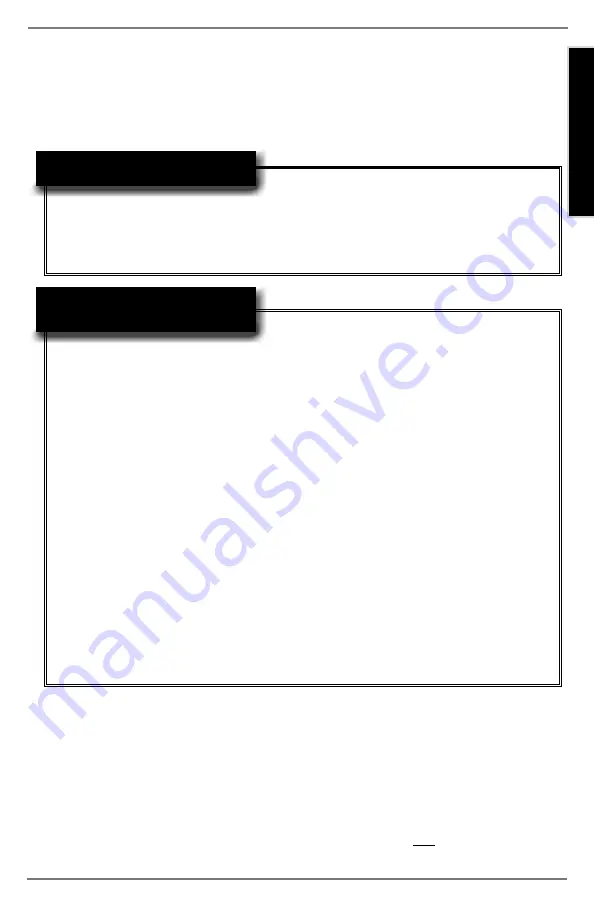
3
West Mountain Radio
Operating Manual
INTRODUCTION
Package Contents
•
Unit
•
Micro USB Cable
•
3 Retention Clips
•
User’s Manual
INSTALLATION AND SET-UP
Choosing a Mounting Location
Pick a location that is central to the vehicle battery, auxiliary battery, as well
as the load or 12V distribution panel. Radios and many 12V devices draw
large amounts of current. All wires have resistance, so it is good practice to
keep them as short as possible and to use a larger gauge wire to minimize
voltage drop. The engine compartment of a vehicle is not a suitable location
for mounting.
The following may damage the unit:
•
Supplying over 20V to any port
•
Operating in an environment over 110 degrees F
•
Drawing more than 40A on the output jack for more than a short time
WARNINGS
Auxiliary Battery Choices:
•
When using an automotive battery, it should be mounted in the trunk or
under the hood. Do not place it in the passenger area of the vehicle.
These unsealed batteries will emit gases that are dangerous in a closed
area.
•
If using a sealed lead acid battery, it can be placed internally. The AGM,
glass mat type is a good choice. It has a charging voltage that is similar
to the car’s alternator voltages.
•
If using a GEL type battery, it also can be placed internally. However,
confirm that the alternator voltage does not exceed 14.5 volts (at 70
degrees F). This will ensure full life for the GEL cell.
Fuses:
A fuse must be placed in the wire at the battery terminals connecting to the
car’s battery. A 40 ampere fuse is recommended. This safety precaution
is necessary because the battery is a large power-storage device that, if
shorted, would release a massive amount of energy, sometimes causing the
battery to explode.
SAFETY
PRECAUTIONS








